Progressive Suspension 422 Motorcycle Shocks
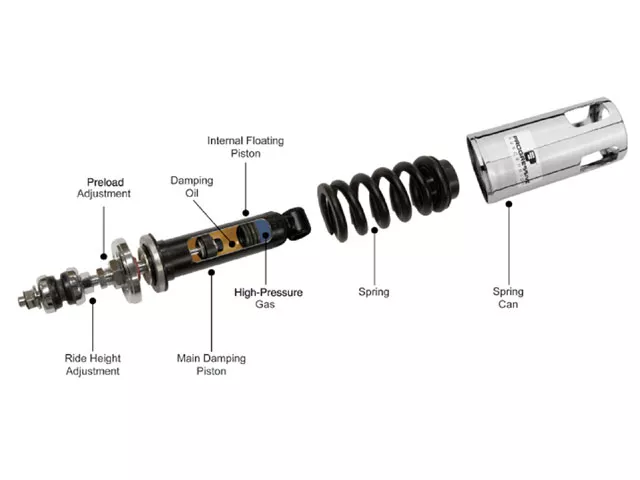
Here is a cutaway of the new Progressive 422s featuring deflective-disc, variable-orifice technology, along with ride-height adjustability.
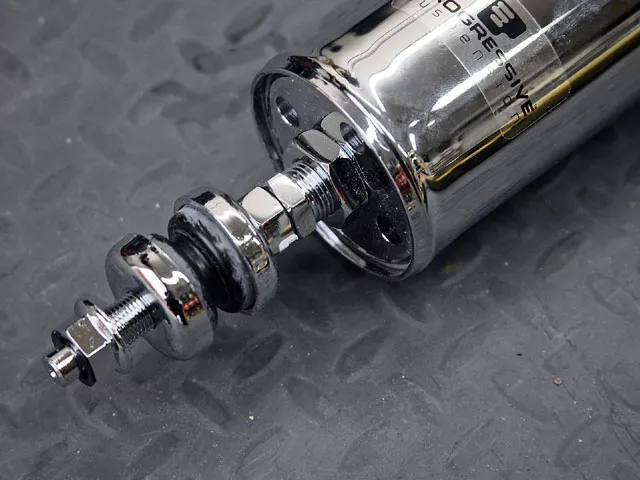
The mounting grommets are sandwiched between two nuts that can be adjusted for either a higher, stock, or lower-than-stock ride height.
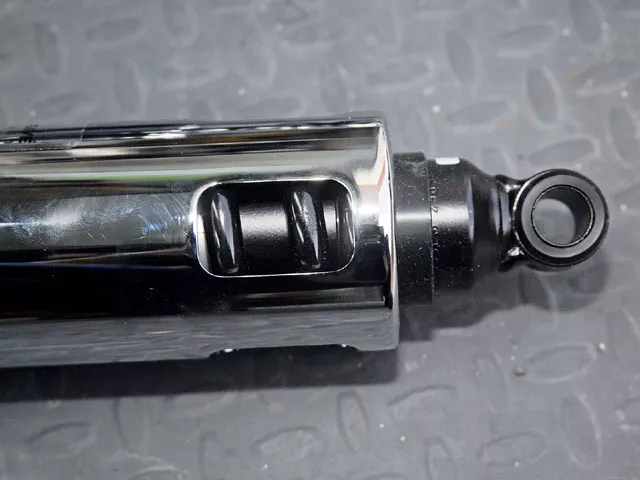
Here you see the open spring chamber of the 422.
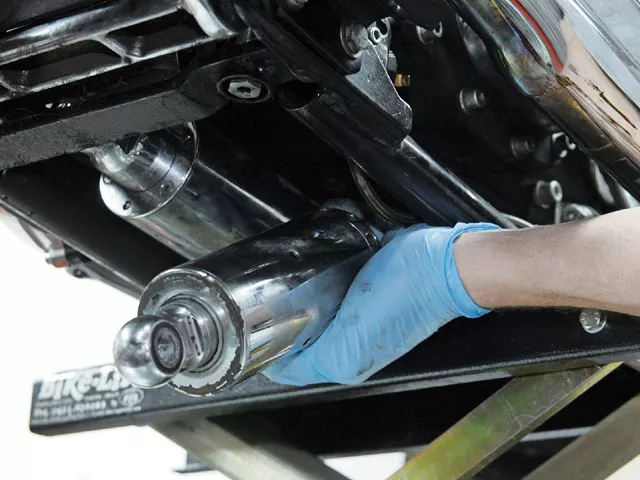
With the bike on the lift, the old shocks were removed.
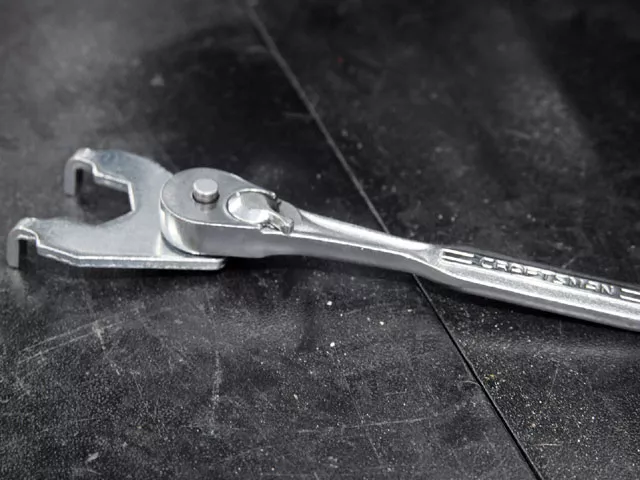
Progressive includes this sturdy spanner that attaches to any 3/8-inch-drive ratchet or breaker bar.
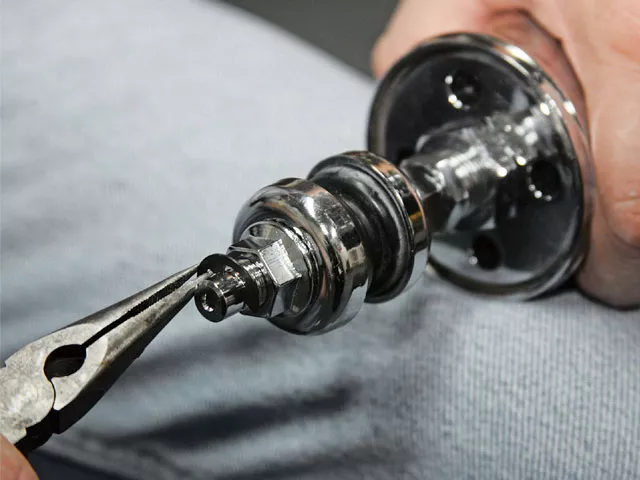
First we removed the C-clip on the end of the shock shaft so the nut and grommet could be removed.
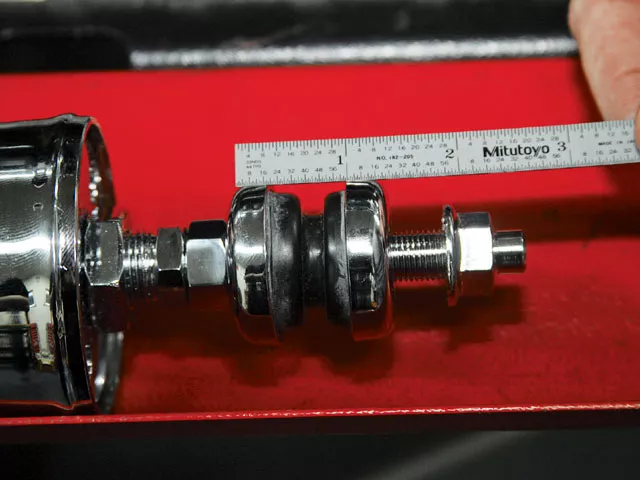
Before removing the grommet, we measured the adjustability length of the shock.
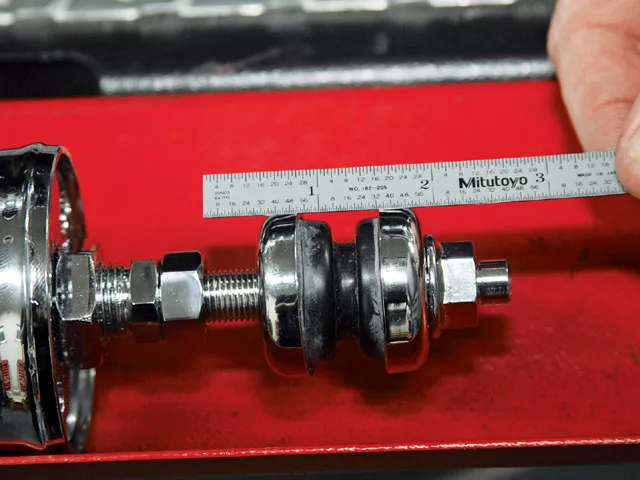
For a starting point, we adjusted the ride height so that it would be in the middle of the adjustability range.
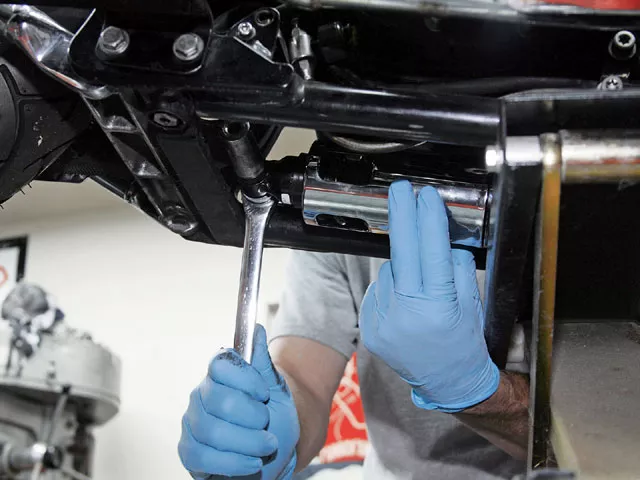
The mounting bolts were treated to some blue Locktite, then snugged up.
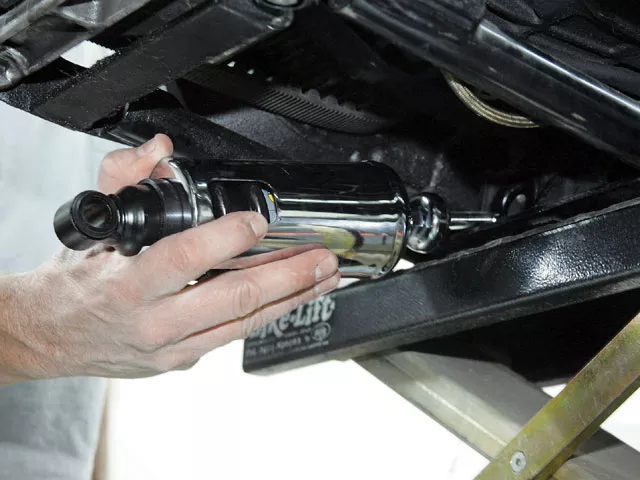
The new shocks were put into place.
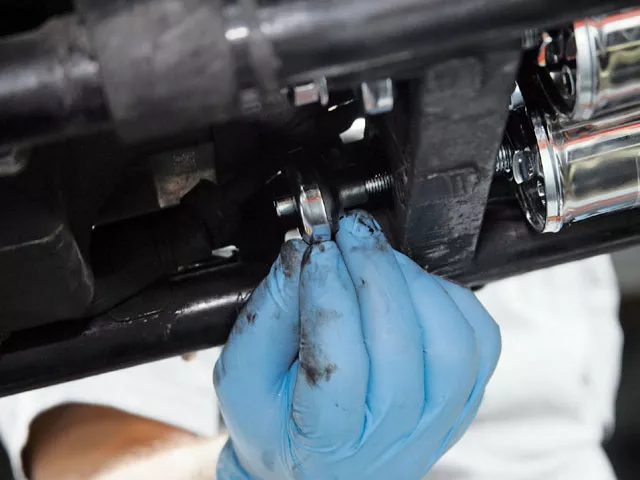
The nuts were threaded on the shaft end of the shocks by hand and then tightened just to the point of slightly compressing the rubber bushings.
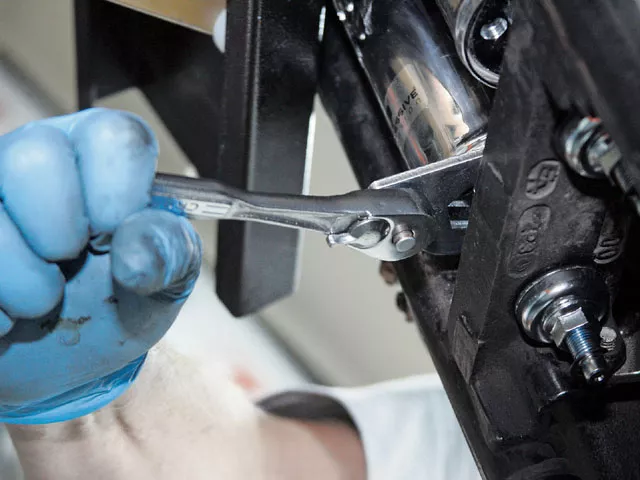
The spanner was used to set the initial preload. After a few miles and a couple of adjustments, we found the setting we liked best.
Ever since the introduction of the Softail frame, companies have been working toward improving the stock suspension. Since the Softail design was intended more for form than function, the goal of designing a rear suspension that works well has been a lofty one. Most of the offerings from various manufacturers are gas/oil shocks and airbag systems, but there have been other approaches to improving upon the rear suspension. There was even a torsion-bar system that worked on a principle similar to the suspension on a Porsche.
Each system has its merits and features. The standard shocks are attractive cost-wise, but fall short when it comes to both performance and adjustability. Airbag systems are by far the most costly, and they perform well once adjusted to their sweet spot. Many systems offer adjust-on-the-fly capabilities, but they may require some maintenance to keep them leak-free. They are great for show bikes, or the occasional cruise to the local hangout, but they’re not very practical for the everyday rider. Most of us want a quality shock that allows us the ability to adjust preload and ride height and then forget about it. With this in mind we contacted Progressive Suspension, since we heard that the company is releasing the new 422 shocks, the next generation of its popular model 413.
Before we go any further, let’s discuss the design of these gas/oil shocks, their components, and how they work. The accompanying photo shows a cutaway of a Progressive 422 shock. The shock has several components but is basically a closed chamber containing a combination of nitrogen and oil, a damping system, and a spring. As the suspension moves, the spring offers both resistance and rebound. The more the spring compresses, the more the resistance grows. In other words, the force required to compress the spring increases proportionally with the amount of compression. Now, if we just had a spring and no damping, riding the bike would be like riding a pogo stick. The damping system, which consists of oil/gas and valving, is what separates a quality performance shock from your everyday run-of-the-mill unit. As the shock expands and compresses, the rod that carries the valving moves through the oil. The oil flows through orifices whose sizes are critical. Too large an orifice, and the compression and rebound will be too fast; too small an orifice, and the shock will compress and rebound too slowly. In order for the bike to ride comfortably and without bouncing all over the place, valving is selected to rebound slowly. The problem arises when hitting multiple bumps, such as when riding over railroad crossings. The first rail causes the wheel to move up in the fender, and before the shock can rebound, the wheel hits the second rail. Since there is no place for the shock to move, the impact is taken up by the rider. Softail riders are very familiar with this bone-jarring feature. One last thing is the nitrogen. The nitrogen’s job is to keep the damping oil from bubbling. With just oil and air, the oil would have a tendency to foam, causing inconsistent damping. So you have a system with a compression/rebound spring and a valve with orifices that moves through a viscous fluid, thus slowing everything down and preventing the bouncy nature of a spring alone.
The Progressive 413s featured check-spring variable orifices, twin-tube construction, and low-pressure gas-bag volume compensation. This is where one of the big improvements was made with the new 422s. Although based on the 413 design, the new Progressive 422s have additional performance and convenience features. First and most importantly regarding performance, the 422s use deflective-disc, variable-orifice technology, mono-tube construction, floating-piston oil/gas separation, and high-pressure nitrogen gas. These design changes enable the 422 series to offer improved ride quality and perform more consistently during those long trips. This is a big step from the fixed damping of other offerings. Another feature is ride-height adjustability. With the turn of a couple of wrenches, you can set up the ride height you desire. Spring preload adjustment is accomplished via a spanner wrench. This is helpful when initially setting up the suspension for your type of riding (solo, two-up, heavy traveling, daily commuting, and so on).
After installing the 422s and taking a couple of short rides, we were able to easily adjust the ride height and preload for riding style and bike weight. Since then, a few hundred miles have been logged on these shocks, and they seem able to soak up and handle just about any irregularity on the road. Potholes and expansion gaps are taken with ease without the rider having to prepare with that ever-so-common Softail pucker before hitting the bump. What really impressed us was the ability of the shock to perform well on washboard surfaces and railroad crossings. This is a test of the shocks’ valving and therefore ability to absorb, rebound, and absorb bumps again and again. The Progressive 422s shine in this department.







